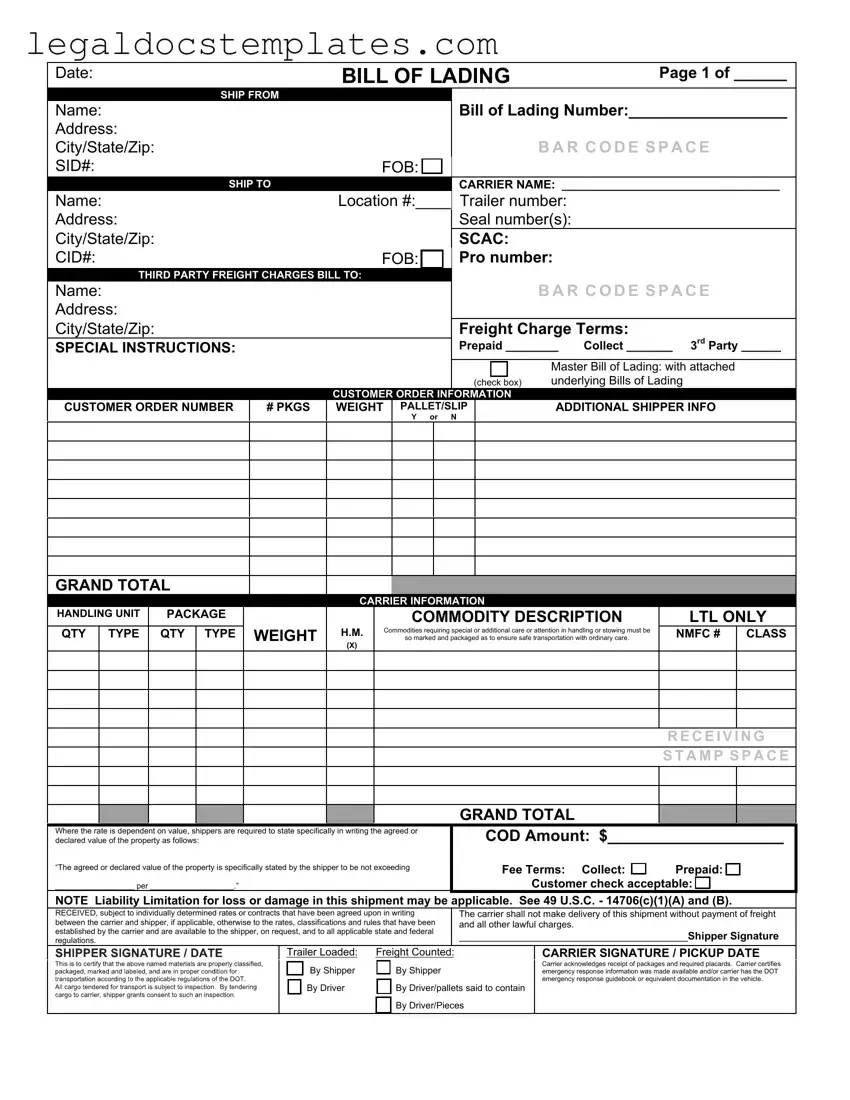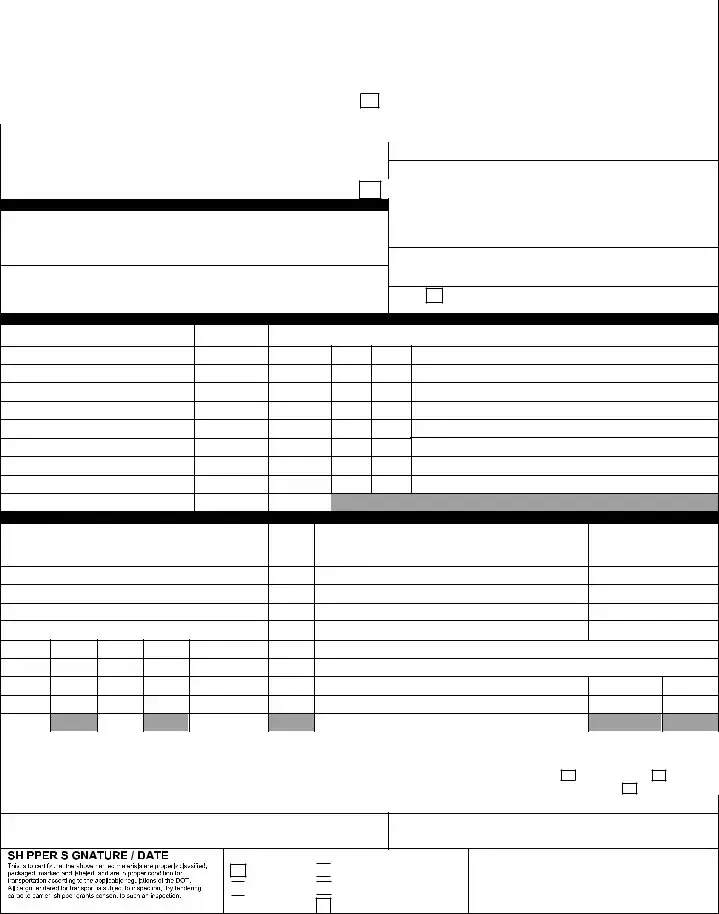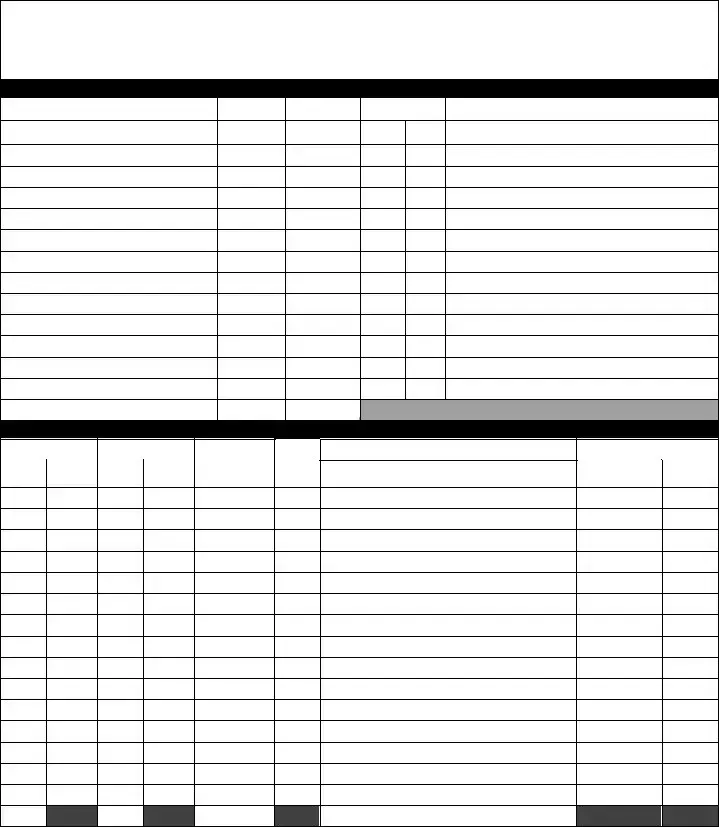The Bill of Lading with a Supplement form shares similarities with a Waybill. Both documents are essential in the transport of goods, serving as receipts issued by the carrier. The key difference lies in their function; while the Bill of Lading can also act as a document of title, enabling the holder to claim ownership of the goods, the Waybill is merely a transport document that does not bestow such rights. Essentially, both documents provide detailed information about the shipped goods, the carrier, and the consignee, but the Bill of Lading holds more legal weight in terms of claiming ownership.
Similar to the Warehouse Receipt, the Bill of Lading is a document that acknowledges the receipt of goods. However, the Warehouse Receipt is used specifically when goods are stored in a warehouse, providing proof of storage and ownership of the goods stored, as opposed to the Bill of Lading, which is used during the transportation of goods. Both documents serve as evidence of the condition and quantity of the goods, but their contexts—transportation versus storage—differ significantly.
The Certificate of Origin is another document similar to the Bill of Lading, as both are used in international trade. The Certificate of Origin confirms the country in which the goods were manufactured, while the Bill of Lading provides detailed information about the shipment's journey, including the origin, destination, and carrier. Each document serves to fulfill different requirements set by customs during the import and export processes, ensuring compliance with trade agreements and tariffs.
Comparable to the Bill of Lading is the Air Waybill, which is specifically used for the shipment of goods by air. Like the Bill of Lading, an Air Waybill acts as a receipt issued by the carrier to the shipper, detailing the goods being transported, their destination, and the terms of the shipment. However, an Air Waybill does not serve as a document of title to the goods, emphasizing its role in transport over ownership.
The Packing List, while less formal, bears resemblance to the Bill of Lading by providing detailed information about a shipment. It lists the contents, weight, and dimensions of the goods being transported, contributing to efficient handling and customs clearance. Unlike the Bill of Lading, the Packing List does not confer any legal ownership or contractual terms but is crucial for verifying that the shipment contents match the commercial invoice and the actual goods received.
The Insurance Certificate, used in international trade, insures the goods being transported, similar to how the Bill of Lading acknowledges their shipment. However, the Insurance Certificate specifically relates to the risk coverage of the goods during transport, contrasting with the Bill of Lading’s role in documenting the consignment’s details and terms. Both documents are essential for the protection and legal clarity of international shipments.
The Shipping Order is akin to the Bill of Lading, as it instructs the transport of goods and specifies the consignment details. However, it's primarily an internal document used within the transport company to authorize the shipment of goods, unlike the Bill of Lading, which is a legal document between the shipper and the carrier that can also affirm ownership.
The Freight Bill, another document related to the Bill of Lading, details the charges related to the shipment of goods. It serves as an invoice from the carrier to the shipper for the transport services provided. While both documents contain details about the shipment, the Freight Bill focuses on the financial transaction between the carrier and the shipper, whereas the Bill of Lading serves more broadly as a receipt and potentially as a document of title.
Lastly, the Export Declaration is a document that, like the Bill of Lading, is used in international trade. It is filed with the government to declare the nature, value, and destination of the exported goods. While the Bill of Lading documents the actual shipment process and the terms under which goods are transported, the Export Declaration is used for customs and statistical purposes, ensuring compliance with export regulations and control.


 to certify that the above named materials are properly classified, packaged, marked and labeled, and are in
to certify that the above named materials are properly classified, packaged, marked and labeled, and are in proper condition for transportation according to the applicable regulations of the DOT.
proper condition for transportation according to the applicable regulations of the DOT.
 By Shipper
By Shipper
 By Driver
By Driver 
 By Driver/pallets said to contain
By Driver/pallets said to contain